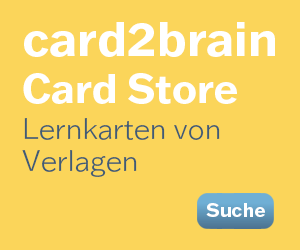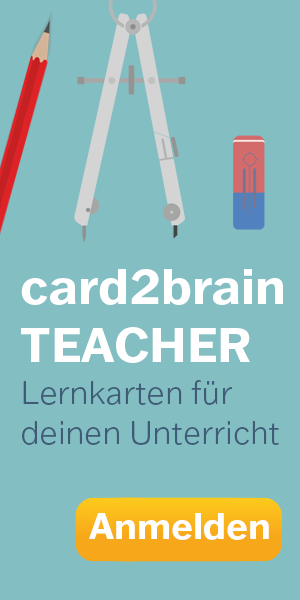b2b mkt
btob
btob
Kartei Details
| Karten | 78 |
|---|---|
| Sprache | Deutsch |
| Kategorie | Übrige |
| Stufe | Andere |
| Erstellt / Aktualisiert | 29.03.2014 / 30.03.2014 |
| Weblink |
https://card2brain.ch/cards/b2b_mkt?max=40&offset=40
|
| Einbinden |
<iframe src="https://card2brain.ch/box/b2b_mkt/embed" width="780" height="150" scrolling="no" frameborder="0"></iframe>
|
Definition: B2B EC
Transactions between businesses conducted electronically over the Internet, extranets, intranets, or private networks; also known as eB2B (electronic B2B) or just B2B
The Basic Types of B2B Transactions and Activities
- Sell-side
- Buy-side
- Exchanges
- Supply chain improvements and collaborative commerce
What Types of transactions exist?
- spot buying The purchase of goods and services as they are needed, usually at prevailing market prices
- strategic (systematic) sourcing Purchases involving long-term contracts that usually are based on private negotiations between sellers and buyers.
What types of materials are traded?
- direct materials Materials used in the production of a product (e.g., steel in a car or paper in a book)
- indirect materials Materials used to support production (e.g., office supplies or light bulbs)
- MRO (maintenance, repair, and operation) Indirect materials used in activities that support production
What are the Benefits of B2B EC?
- Creates new sales (purchase) opportunities
- Eliminates paper and reduces administrative costs
- Expedites processing and reduces cycle time
- Lowers search costs and time for buyers to find products and vendors
- Increases productivity of employees dealing with buying and/or selling
- Reduces errors and improves quality of services
- Makes product configuration easier
- Reduces marketing and sales costs (for sellers)
What are the Limitations of B2B EC
- Channel conflict
- Operation of public exchanges
What are Inefficiencies in Traditional Procurement Management?
- procurement management: The planning, organizing, and coordination of all the activities relating to purchasing goods and services needed to accomplish the mission of an organization
- maverick buying: Unplanned purchases of items needed quickly, often at non-prenegotiated higher prices
The Marketing Mix – Name the 7Ps
Price, Product, Promotion, Place, People, Process, Physical Environment
What about pricing strategy?
- Skimming
- Penetration
- Psychological cost-plus
- Loss leader
What about product strategy?
- Design
- Technology
- Usefulness
- Convenience
- Value
- Qualtity
- Packaging
- Branding
- Accessories
- Warranties
What about Promotion strategy?
- Special offers
- Advertising
- Endorsement
- User trials
- Direct mailing
- Leaflets, poster
- Free gifts
- Competitions
- Joint ventures
What about Place strategy?
- Retail
- Wholesale
- Mail order
- Internet
- Direct sales
- Peer to peer
- Multi Channel
What about People strategy?
- Employees
- Management
- Culture
- Customer service
What about process strategy?
- Especially relevant to service industries
- How are services consumed?
- Contact
- Reminders
- Registration
- Subscription
- Form filling
- Degree of technology
What about Physical environment?
- Smart
- Run down
- Interface
- Comfort
- Facilities
Why segmenting B2B markets?
Segmentation helps marketers develop the most appropriate strategy.
How to segment B2B markets?
- Segmentation by demographics (size of revenues or employees)
- Segmentation by customer type (industry, product specifications, NAFTA)
- Segmentation by end-use application (use of the product)
- Segmentation by purchase categories (organizational buyer characterisics)
What are the characteristics of the B2B market?
- Geographic market concentration (More concentrate than B2C, Internet improves)
- Sizes and number of buyers (less customer than B2C, customers are large organizations)
- Purchase decision process
- Buyer seller relationship
- Evaluation international business markets
Business market demand
- Derived demand
- Volatile demand
- Joint demand
- Inelastic demand
- Inventory demand
What is the buying center concept?
Buying center Participants in an organizational buying action. Buying center roles:
- Initiator
- Users
- Gatekeeper
- Buyer
- Influencer
- Decider
What is the goal of purchasing?
- Achieve Lowest total cost
- Uninterrupted Flow Material
- Improve Quality
- Developing and Managing Supplier relationships
- Manage Inventory
- No or Less mediatory
What are challenges in international buying centers?
- Marketers may have difficulty identifying members of foreign buying centers.
- Marketers who can quickly identify decision makers have an advantage over competition
What is team selling?
- Combining several sales associates or other staff to help the lead account representative reach all those who influence the purchase decision.
- May include members of the seller firm’s own supply network in the sales situation.
What are challenges of government markets?
- Purchases typically involve dozens of interested parties and may be influenced by social goals.
- Most federal government purchases must go through a complex bidding process governed by the Federal Acquisition Regulation.
- GSA Advantage allows government buyers to make purchases online at preferred government prices.
What are challenges of institutional markets?
- Include schools, hospitals, libraries, foundations, and others.
- Multiple buying influences can affect buying decisions, such as conflicts between professional staff and purchasing departments.
What are challenges of international markets?
- Marketers must consider buyers’ attitudes and cultural patterns.
- Local industries, economic conditions, geographic characteristics, and legal restrictions must all be considered.
- Foreign governments are also an important market.
What types of B2B Marketing exist?
Conventional: face-to-face events, print advertising, customized magazines, Telemarketing
Digital: Email, Webcast, Articles & Blogs, Podcast (audio/video), Search Advertisements, Social Networks, E-news Letters, Webinars, White Papers
Name the steps of the B2B buying process!
- Problem Recognition
- General Description of Need
- Product Specification
- Supplier Search
- Acquisition & Analysis of Proposal
- Supplier Selection
- Selection of Order Routine
- Performance Review
What are the organizational buying situations?
- Straight buy
- Modify buy
- New task
What is the nature of industrial buying and behavior? Which forces do you know?
- Environmental Forces
- Organizational Forces
- Group Forces
- Individual Forces
What are issues in B2B Marketing?
- Complex decision making units
- Limited number of buying unit
- Long term buyers
- Less innovation
- Personal relationship
- Rely more on packaging
- Sub-brands are less effective
What are mistakes in digital B2B marketing?
- Ignoring social media reach of your business
- Posting Regularly On Social Media
- Not Trying To Generate Lead
- Blabbering About Boring Products
- Hiring the Same Old Marketer
What types of procurement exist?
- Contract purchasing
- Spot purchasing
- Multi-tier supply chain
- Complex series of transactions between firm and thousands of suppliers, supplying thousands of goods
What is Electronic Data Interchange (EDI)?
Broadly defined communications protocol for exchanging documents among computers. EDI provides for exchange of critical business information between computer applications supporting wide variety of business processes.
What is Collaborative Commerce?
Collaborative Commerce (C-Commerce) is considered to be the replacement of E-Commerce and hence the next stage in the development of electronic business solutions. It is defined as ´”an application of an interorganization information system for electronic collaboration between business partners and organizational employees” 1). Among all parties that are participants of the Value_chain (customers, suppliers and trade partners), a C-Commerce solution forms a joint platform to design, create, manage and administrate real-time data.
Which are the Two Main Types of Internet-Based B2B Commerce?
- Private industrial networks:
- Bring together small number of strategic business partner firms that collaborate to develop highly efficient supply chains (Procter & Gamble’s Private Industrial Network)
- Relationship-based
- Support many-to-one and many-to-few relationships
- Largest form of B2B e-commerce
What are Implementation Barriers?
- Concerns about sharing of proprietary, sensitive data
- Integration of private industrial networks into existing ERP systems and EDI networks difficult, expensive
- Requires change in mindset and behavior of employees and suppliers
–All participants lose some independence













